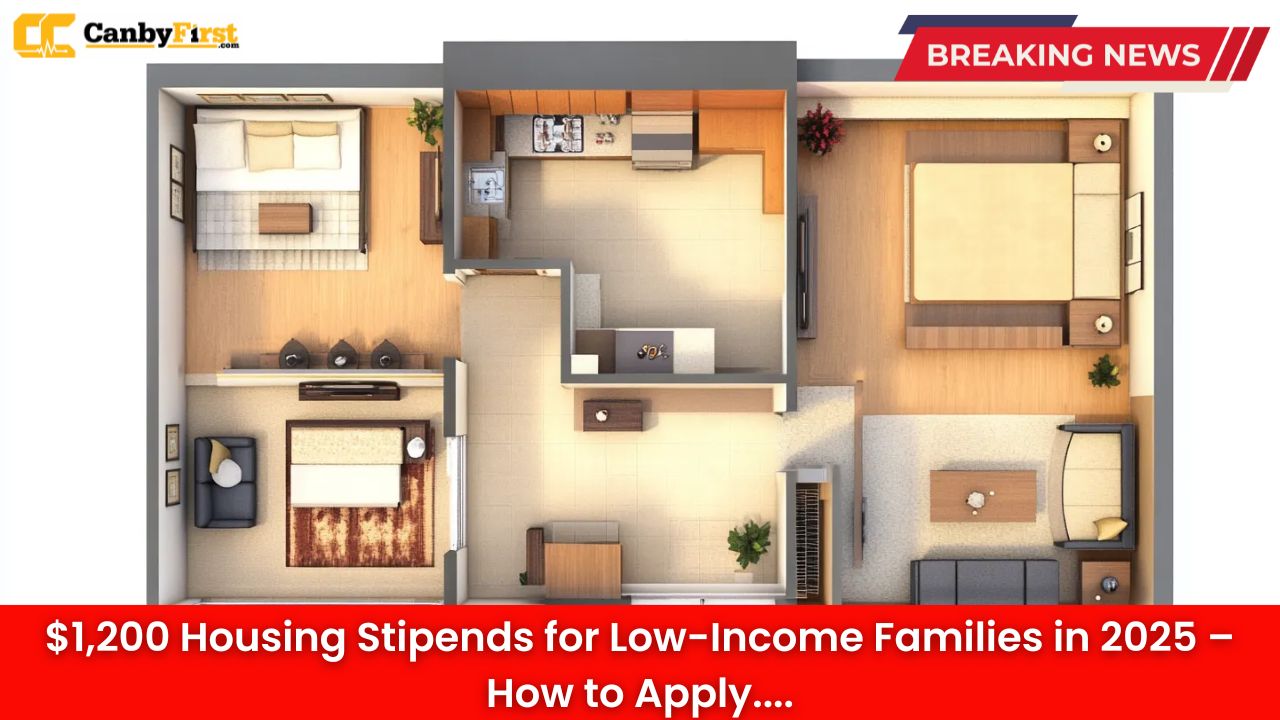In 2025, a new housing support program has been rolled out across the United States, offering monthly $1,200 housing stipends to eligible low-income families. The initiative, designed to ease the growing burden of rising rents and housing shortages, aims to provide immediate relief for vulnerable households struggling to secure stable shelter.
A Lifeline in the Housing Crisis
Rents in many cities have soared beyond the means of working-class families, creating widespread instability. According to federal housing authorities, millions of households spend more than 50% of their income on rent alone, far exceeding the recommended 30%. The $1,200 stipend is intended not only to reduce eviction risks but also to create economic breathing room for families to cover other essentials such as food, healthcare, and education.
The program has been received with cautious optimism by policy experts, who highlight that while it may not completely solve the nationwide housing crisis, it represents a critical step forward in protecting the most vulnerable citizens.
Also Read
Who Qualifies for the Stipend?
Eligibility for the stipend is based primarily on income level, household size, and housing status. Families earning below 60% of the area median income (AMI) will be prioritized. Additionally, priority consideration will be given to:
-
Families with children under 18
-
Single parents
-
Seniors and disabled individuals living on fixed incomes
-
Veterans without stable housing
Applicants must also demonstrate either current rental agreements or proof that they are seeking stable housing.
How to Apply
The application process has been designed to be accessible both online and in-person at local housing assistance offices. Here is a step-by-step guide:
-
Check Eligibility: Use the income chart provided by local housing authorities to confirm whether your household qualifies under the AMI limit for your area.
-
Prepare Documentation: Applicants will need recent pay stubs, tax returns, proof of residence, rental agreements, or eviction notices, along with valid photo identification.
-
Submit Application: Families may file online through their city or county housing agency portal, or directly at designated offices. Paper applications are also acceptable in most states.
-
Wait for Approval: Processing times vary but typically take between 30 to 45 days. Emergency cases, such as imminent eviction, may be expedited.
-
Receive Stipend: Successful applicants will receive the stipend either as a direct deposit to their landlord or as a housing voucher that covers part of their rent.
Monthly Assistance Coverage
The $1,200 stipend is structured to ensure that it directly supports rent expenses. In many cases, payments will be sent to landlords or property managers to eliminate misuse concerns. However, in circumstances where tenants manage their own housing—such as senior co-ops or private family rentals—the stipend may be deposited directly into the applicant’s account.
Impact on Local Communities
Economists argue that the stipend program may have broader benefits beyond just easing rent. By reducing the financial pressure on low-income households, it could stimulate local economies. Families who are not overburdened by rent can spend more on groceries, transportation, clothing, and school supplies, creating a multiplier effect in their communities.
Community organizations also note that keeping families stably housed reduces the strain on shelters, emergency services, and healthcare systems often swamped by the effects of homelessness and housing insecurity.
Potential Challenges
While the program is promising, it faces hurdles. Critics worry that without addressing the rising cost of rent, stipends may temporarily ease the pressure but fail to solve long-term affordability. Some landlords may also adjust rental prices, anticipating the government support.
There are also concerns about application backlogs if too many households apply at once. Housing authorities are urging families to apply early and ensure all documents are complete to avoid delays.
Government Commitment
Officials have reassured the public that funding for the $1,200 stipend program has been fully allocated for multiple years, ensuring consistency. Counties will have oversight responsibilities, and audits are expected to maintain transparency and avoid fraud.
Local governments are also exploring complementary assistance programs, such as rental counseling, eviction prevention initiatives, and community development projects, to maximize the impact of the stipend system.
What Families Should Do Now
Families eligible for the program are encouraged to prepare their paperwork in advance. Community centers, nonprofits, and housing organizations are offering workshops to guide applicants through the process. With housing instability continuing to threaten millions, early application is key to receiving timely support.
FAQs
1. Who can apply for the $1,200 housing stipend?
Low-income families earning under 60% of the area median income, with priority for children, seniors, veterans, and disabled individuals.
2. How long will it take to get approved?
Average processing can take about 30 to 45 days, though urgent eviction cases may receive faster approval.
3. Will the stipend cover the entire rent?
Not always. The $1,200 stipend is meant to reduce the cost burden, but families may still need to contribute depending on total rent.
4. Can undocumented families apply?
Eligibility depends on state regulations, but generally applicants need valid identification and residency documents to qualify.
5. When does the program start?
The program is active in 2025, and applications are already being accepted through local housing authority offices and online portals.












